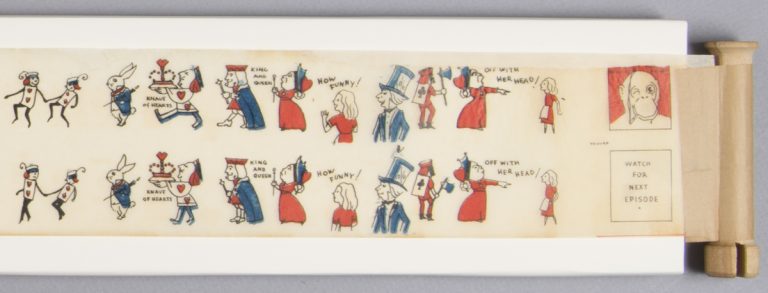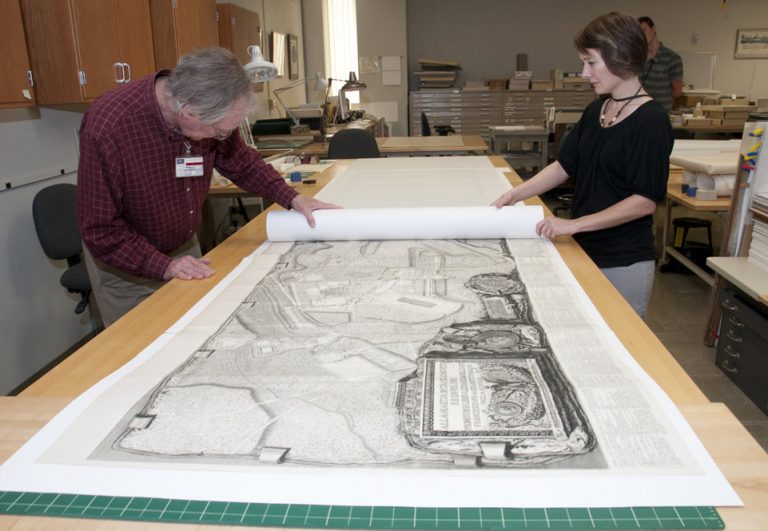The exhibition Alice’s Adventures in Wonderland features two 1933 toy paper film strips called Movie Jecktors. The film strips portray two of the most memorable parts of the Alice story: “Down the Rabbit Hole” and “The Mad Hatter.” Images and text are printed in three colors on 35″ strips of… read more
Heather Hamilton
Meet the Staff: Heather Hamilton, Head of Paper Conservation
Meet the Staff is a Q&A series on Cultural Compass that highlights the work, experience, and lives of staff at the Harry Ransom Center. Heather has a Bachelor of Arts in English from the University of Massachusetts at Boston and a Master of Arts from Buffalo State College with a… read more
Conservation team brings large map to larger audiences
The Ransom Center’s archives are full of treasures waiting to be pulled off the shelves. But once paged from the stacks, some of those treasures prove difficult to handle. Such was the case with Giovanni Battista Piranesi’s enormous 1786 print “Pianta delle Fabriche Esistenti Nella villa Adriana.” The 10-foot wide map… read more




